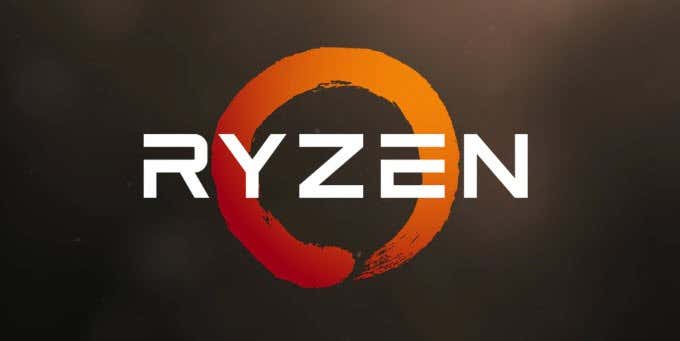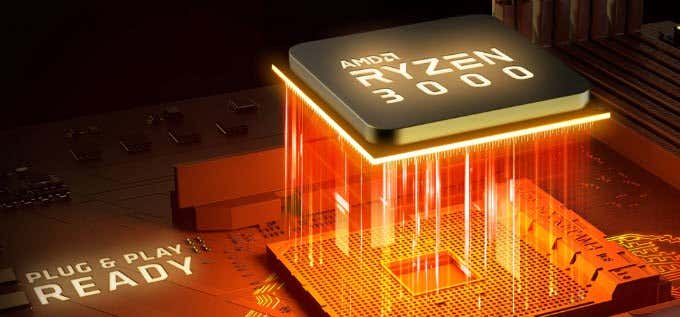This is notable because AMD has held the second-place spot for processors for quite a long time now, always falling behind Intel despite tremendous effort on the AMD’s part. What makes the AMD Ryzen 3000 so special is that its specs could put the company ahead of Intel—and in some cases, demolish previous record-setting benchmarks. If you start to dig into the exact whys and hows of this, you’ll quickly find yourself in the weeds with technical jargon and terminology. This article will explain in layman’s terms what sets this processor apart and why it is important.
Defining Terms
There are certain terms used in relation to hardware that are simply the best way to explain certain concepts. We will do our best to define them here in a way that is easy to understand and remember.
Nanometer (nm): A nanometer is one-billionth of a meter. In numerical representation, this is 0.000000001 meters. Nanometers are abbreviated as “nm.” Transistor: A semiconductor found on a chip that exists in either an “On” or “Off” state. Transistors are important gauges for CPUs (central processing units). A good rule of thumb: the more transistors, the more efficient the CPU. Central Processing Unit (CPU): The CPU is the “brain” of the computer. This small chip sits inside the motherboard and drives many of the operations and processes that take place within your PC. The CPU is also referred to as the “processor” or, more rarely, the “microprocessor.” Motherboard: If the CPU is the “brain” of the computer, then the motherboard is the cardiovascular, endocrine, and muscoloskeletal systems. The motherboard is a printed board of fiberglass and copper that directs power flow to various components, organizes the results of CPU processes, and acts as the central connection for various components. Core: You often hear about “multicore” processors. This is a part of the CPU that performs calculations based on given instructions. CPUs come in single core, dual core, quad-core, and eight-core variants. While there are CPUs with even more cores, these usually exceed consumer-grade hardware.Thread: In terms of computing, a “thread” is series of instructions that the processor carries out. Multi-thread processing is when the CPU divides the various threads between its cores to perform more than one operation at a time. Cycle: A single electronic pulse from the CPU.Clock Speed: The number of cycles per second a CPU can execute.Overclocking: The act of boosting of a CPU’s clock speed to beyond what it was designed to handle. The faster the clock speed, the more heat the CPU produces. Clock speed is limited by how hot the CPU and its materials can become before the computer suffers permanent, irreversible damage.Cache: A smaller collection of memory with higher speeds where often-needed data or information is stored for fast, easy access.
A Note on Moore’s Law
“Moore’s Law” is not a “law” in a scientific or legal sense; rather, it’s the observation that the number of transistors on a single processor doubles year after year. It is so named for Gordon Moore, the CEO of Intel and founder of the company Fairchild Semiconductor, based on a paper he wrote in 1965. Moore’s Law held true for decades, but in recent years has begun to be disproven. The number would double because transistors would become smaller and require significantly less power. As we approach the limits of current manufacturing processes, the number of transistors added each year also slows. The AMD Ryzen 3000 series marks the first time transistors have shrunk in any major way since 2014. Transistors are typically made of silicon, but below 7nm they become unwieldy. The physical space is so packed that electrons actually pass through physical barriers. (The official name for this phenomenon is quantum tunneling. Don’t worry about it beyond that.) However, other materials than silicon can work that closely together to create even smaller transistors. Manufacturers and computer scientists are conducting research to break through this obstacle. The discovery of a material that can be used to make smaller transistors on a mass scale would be a major breakthrough for computer hardware.
AMD Ryzen 3000 Specs
Now that we have those terms out of the way, let’s dive into exactly how powerful the AMD Ryzen 3000 series is. At Computex, AMD announced five specific processors (although more have leaked since that time):
The Ryzen 9 3900X: 12-core, 24-thread with a base speed of 3.8 GHz and a boosted speed of 4.6 GHz. Starting price: $499.The Ryzen 7 3800X: 8-core, 16-thread with a base speed of 3.9 GHz and a boosted speed of 4.5 GHz. Starting price: $399.The Ryzen 7 3700X: 8-core, 16-thread with a base speed of 3.6 GHz and a boosted speed of 4.4 GHz. Starting price: $329.The Ryzen 5 3600X: 6-core, 12-thread with a base speed of 3.8 GHz and a boosted speed of 4.4 GHz. Starting price: $249.The Ryzen 5 3600: 6-core, 12-thread with a base speed of 3.6 GHz and a boosted speed of 4.2 GHz. Starting price: $199.
In addition to these new processors, it should be noted that AMD introduced a new X570 chipset with PCIe 4.0. In the simplest possible terms, this means these processors can take advantage of faster storage transfer rates. This means vastly improved performance from graphics cards, networking devices, and storage drives. The numbers listed above are impressive, but they’re not that impressive. There are faster clock speeds out there. So what makes the AMD Ryzen 3000 series such a point of excitement? Well, there’s more going on beneath the surface of the chip. In addition to the numbers here, AMD has claimed that the Zen 2 architecture that these processors are built on has 15% more instructions per clock than the Zen+ architecture. The reason is based on how the Zen 2 architecture is designed. We’ll touch briefly on how this works. Inside a chipset are various components that all work together, including things called a cIOD (short for client IO die) and a CCD (short for charge coupled device.) The cIOD links with one or two CCDs. This divides the work between the components, which means the potential for latency (or lag) in processes. Of course, this lag is measured on a nanosecond scale, so while not noticeable to the user, it presents a potential throttle for achieving the highest possible speed. According to AMD, however, this should be a moot point. AMD also doubled the L3 cache size. The cache lets the processor retrieve information it needs more quickly. These new processors use multiple caches to divide this memory so that nothing is replicated, which has resulted in performance improvements that make process lag irrelevant.
Why All This Matters—and Why It’s Exciting
Now that we’ve covered the technical aspects of these chips, let’s boil down to the reason you’re reading this article in the first place: why it’s so exciting. The first and foremost reason is competition. Intel has had a monopoly on high-performance cards for years. While AMD isn’t a bad option, those looking for top of the line performance have to pay whatever Intel prices their cards at. With AMD coming onto the scene and at least matching or potentially beating Intel, it means competition and hopefully lower prices. The second reason is that new manufacturing processes mean more innovation and improvements in the computing field. A lot of talk has swirled around for years about quantum computing and other potential avenues to explore, and for good reason: everyone could see the end of the line for our previous methods. While 7 nanometer transistors pose challenges of their own, their development and use in consumer-grade products is a good sign that manufacturers are on the right path to the next stage of computer technology. The third reason, and the one most relevant to gamers, is the potential for better graphics and more frames per second at a semi-affordable price point. A maxed-out gaming PC isn’t always affordable, and maintaining a cutting-edge system will never be a cheap hobby, but better processers mean less power, which means less of the budget has to go to a power supply. People get excited about new games and awesome computer builds, but behind all the flash and glamour lies the heart of computing: the processors, motherboards, and other components that make it all work. And when those components get major improvements like this, well—that’s a reason to get excited.




